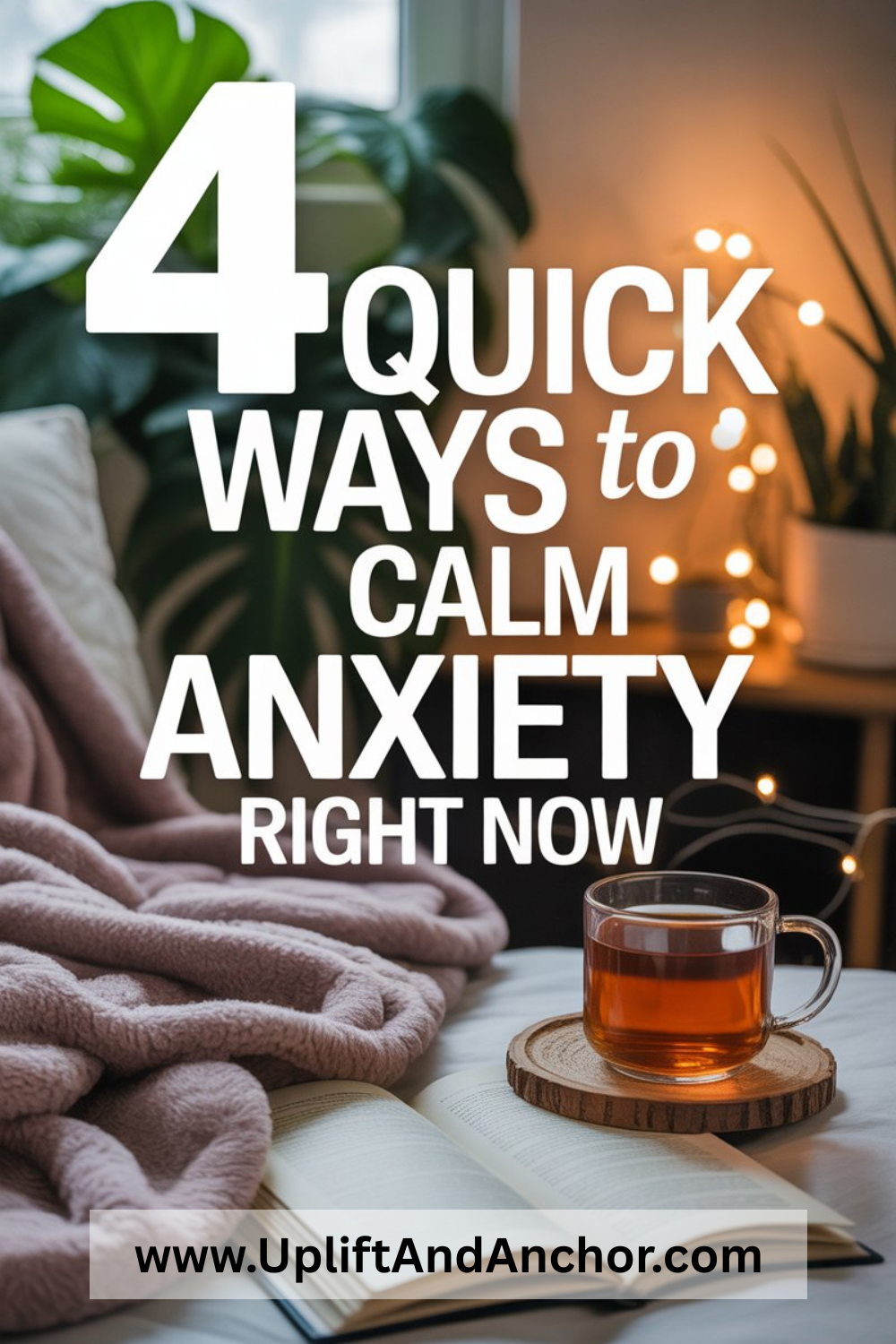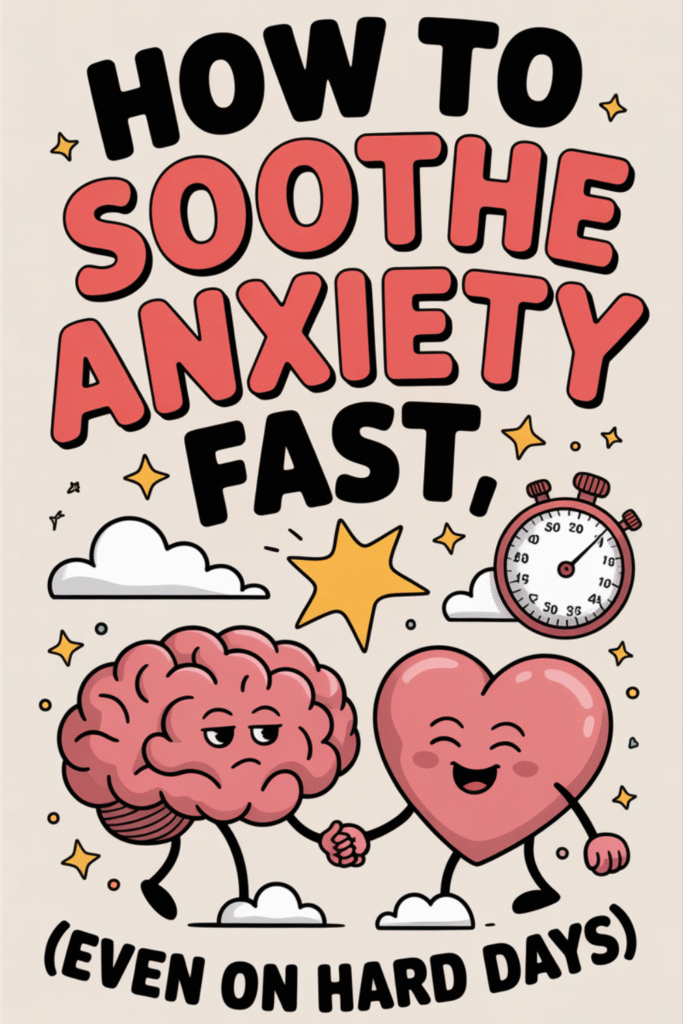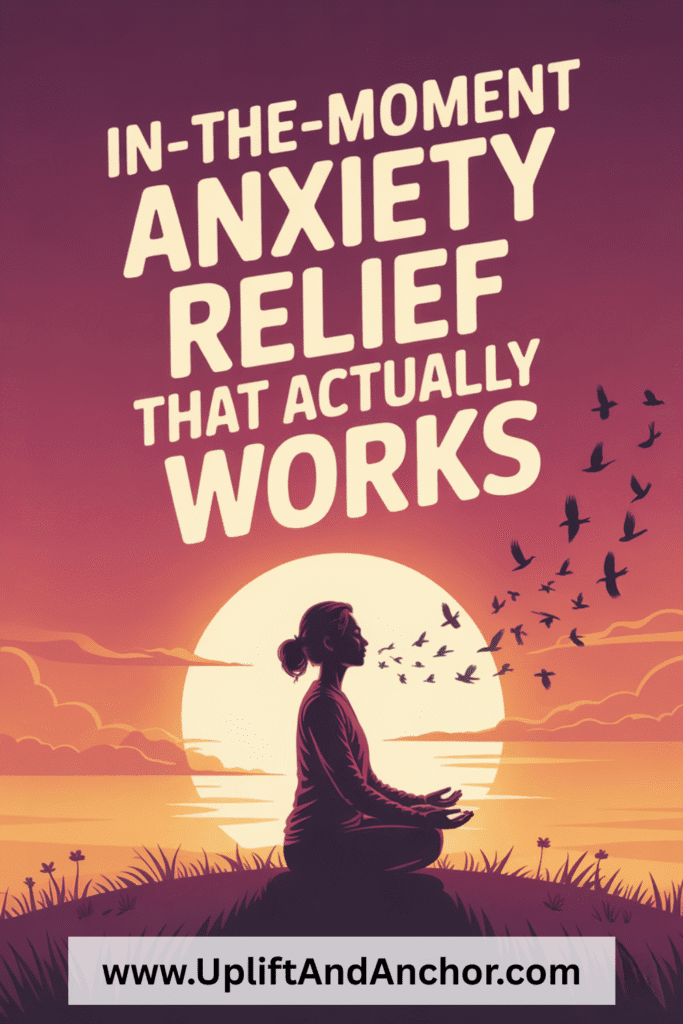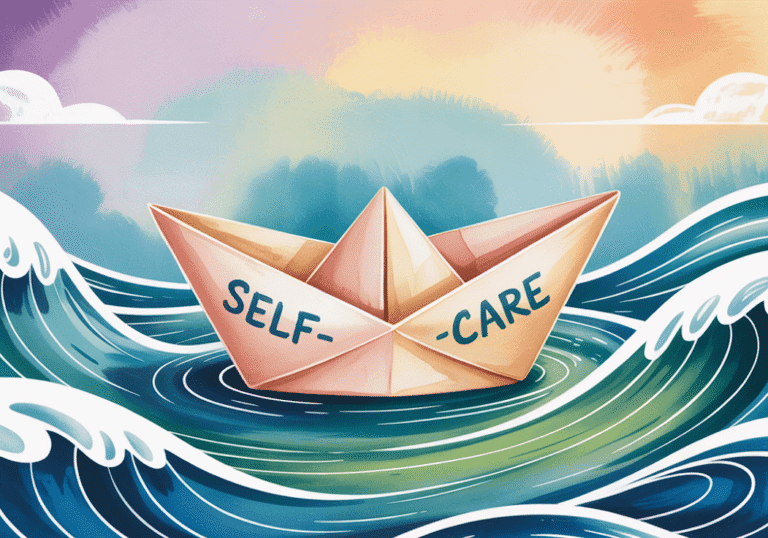A friendly heads-up: I’m not a doctor or licensed healthcare provider. The information on this blog is for general guidance and sharing personal insights, and not for professional medical advice. Always consult with a qualified healthcare professional for any health concerns. For mental health emergencies, please call or text 988.
I know how it goes… the knots in the stomach, racing thoughts, shortness of breath…. anxiety. It’s the worst, right? Unfortunately, those symptoms, and others, are symptoms of anxiety. When things become overwhelming, people (like myself) can experience an anxiety attack. Symptoms include a tight chest and being unable to catch their breath at all. In this post, I will be sharing a few simple, science-backed strategies you can use to soothe anxiety and regain a sense of calm.
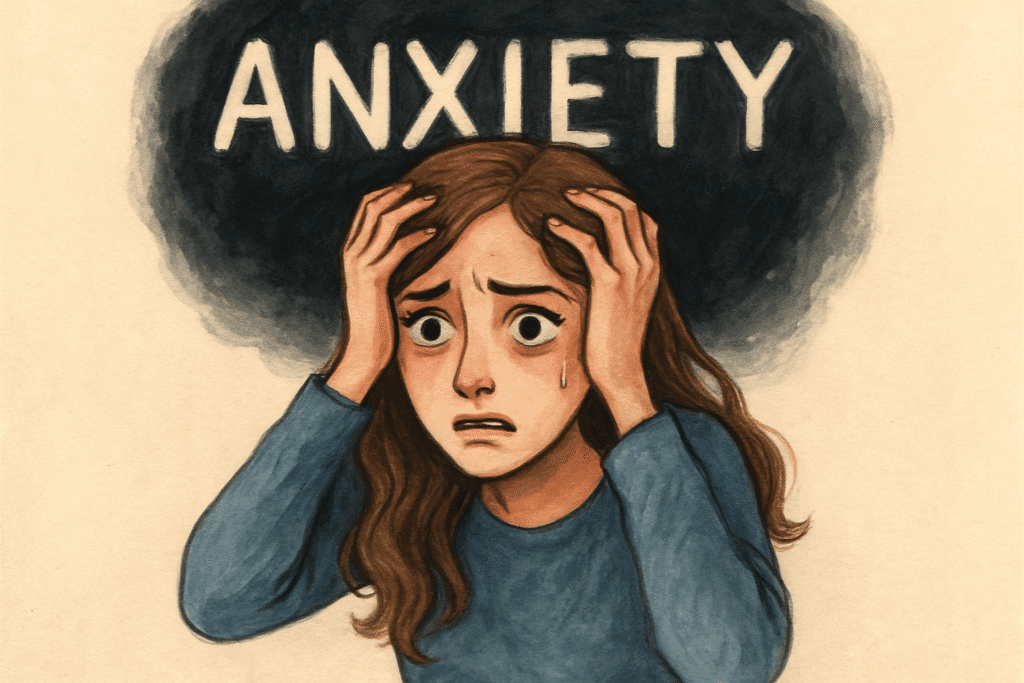
What is Anxiety?
First, let’s talk about the symptoms that can be a part of anxiety:
- Excessive Worry/Fear
- Overthinking
- Sense of Dread
- Feeling on Edge or Restless
- Dissociation
- Phobias (Especially prevalent in the diagnosis of social anxiety)
- Sweating
- Fatigue or Tiredness
- Trembling or Shaking
- Rapid Heartbeat
- Shortness of Breath/Hyperventilation
- Stomach Issues/Nausea
- Chest Pain or Tightness
- Social Withdrawal
- Difficulty with Daily Functioning
If you are dealing with any of these symptoms, please do not be ashamed. It is a common thing, and the National Institute of Mental Health (NIMH) says that an estimated 31.1% of U.S. adults will experience some anxiety disorder sometime in their lives. There is help out there and coping mechanisms to help you deal with your anxiety symptoms.
Let’s get to some ways to deal with your anxiety in the moment when it’s rearing its ugly head!
In-The-Moment Relief: 4 Ways to Soothe Anxiety Fast
1. Deep Breathing Techniques
Deep breathing techniques may be simple, but they are powerful tools that can reduce stress and calm the nervous system, thus alleviating anxiety symptoms. The process helps to stimulate the parasympathetic nervous system, which counteracts the “fight or flight” response that we are feeling in our bodies when we have anxiety.
- Belly Breathing – Also called Diaphragmatic breathing because it engages the diaphragm and promotes fuller oxygen exchange and activates the vagus nerve, helping to signal relaxation. Here is how you do belly breathing:
- Lie or sit comfortably and put one hand on your chest and the other on your belly, just below the ribcage. Inhale slowly through your nose while allowing your abdomen to rise as it fills with air. Exhale slowly through slightly opened lips, feeling your belly gently go inward. You want to focus on your breath in your belly rather than your chest. Please see below a Belly Breathing Video from The Mindfulness Teacher on YouTube for a great example!
- Box Breathing – You’ll be counting in equal counts, creating a “box” rhythm that effectively calms the mind and improves your focus. Here’s how you do it:
- For a count of 4, inhale slowly through your nose. Next, for 4 seconds, hold your breath. Then, for a count of 4, exhale slowly through your mouth. Finally, for a count of 4, hold your breath. Repeat this cycle as many times as needed.
- Physiological Sigh – By mimicking an involuntary sigh, you’re regulating oxygen and carbon dioxide levels in your lungs, efficiently helping “reset” your nervous system. You can do this by:
- Take a full, deep breath and filling your lungs as much as possible. Next, release all the air in your lungs in a long, relaxed sigh. Feel free to make a soft “whoosh” sound as you’re exhaling. Do this 1-3 times or until you finally feel a sense of calmness.
2. Grounding Exercises
Grounding exercises help to pull your awareness away from the anxiety and panic you are feeling and instead anchor yourself in your current reality. There are two popular types of ground exercises, including 5-4-3-2-1 and categorization grounding:

- 5-4-3-2-1 Technique Sensory Grounding:
- 5 things you can SEE: Look around your surroundings and notice five different things you can see.
- 4 things you can TOUCH/FEEL: Identify four things you can feel – examples are different textured objects you can pick up (a fluffy pillow), the temperature of the air in your room, etc.
- 3 things you can HEAR: Take a moment to be silent and listen to your surroundings to identify three things you can hear. Maybe there is music playing, you can listen to an animal making noise, or you can hear the hum of the nearby refrigerator.
- 2 things you can SMELL: What are two different scents around you? Maybe there is coffee brewing, or you smell flowers. If you are unable to come up with two scents, think of a favorite scent of yours that brings you comfort.
- 1 thing you can TASTE:
- Categorization Cognitive Grounding: By redirecting your thoughts, you are forcing your brain to focus on something, you are diverting your attention away from stressful thoughts/focuses, breaking that cycle of rumination.
- Name all of the colors that you can see in a room.
- Name all of the cities that you can think of.
- Count backwards from 100 by 3s or 7s.
- List all of the animals you know.

3. Mindful Observation
Mindful observation involves intentionally paying attention to the present moment without judgment, allowing the thoughts and moment to pass. Two types of Mindful Observation are Mindful Eating and Mindful Movement.
- Mindful Eating – Taking the time to notice what you are eating can turn it into a rich sensory experience. You will use your senses to guide the experience:
- See – Notice the shape and color of the food item.
- Touch – Feel the weight, texture, and temperature in your fingers and hand.
- Smell – What aromas do you notice when using your nose to smell it?
- Taste – You will want to slowly place the food item in your mouth, but don’t chew immediately. Notice the beginning texture and taste, and even how your saliva acts. Now, slowly chew and see how the textures and flavors evolve and change.
- Hear – Do you notice any sounds as you chew and or swallow?
- Mindful Movement – This technique is something that doesn’t have to be going for a run – even simple as something as going for a walk is helpful and will help bring present-moment awareness to you.
- As you are walking (or running, dancing, or any other type of movement), notice the feeling of your feet making contact with the ground, the pressure, the balance, and the movement in your muscles. You can also expand your awareness to your surroundings.
- Bonus tip: This would be a good one to combine with the 5-4-3-2-1 grounding exercise as well!
- As you are walking (or running, dancing, or any other type of movement), notice the feeling of your feet making contact with the ground, the pressure, the balance, and the movement in your muscles. You can also expand your awareness to your surroundings.
4. Sensory Soothing
Sensory soothing intentionally uses sensory inputs to regulate emotions, reduce stress, and promote calmness. It provides an excellent, gentle way to shift your focus in the middle of an anxiety attack to bring you back down. Here are two popular types of sensory soothing:
- Auditory Soothing/Sound Soothing – Listening to certain sounds can help distract from distress. Here are a few ideas:
- Nature sounds or calm music
- Hum or sing your favorite song
- Olfactory Soothing/Smell Soothing – The sense of smell is linked directly to our limbic system, which plays a massive role in emotion and memory, making scents a powerful tool for soothing. Here are a few ideas for you:
- Natural smells – Take a step outside, take a breath, and see what you smell. This would be extra nice on a rainy day or if there happen to be flowers around to smell.
- Aromatherapy – Using essential oils are a popular tool to use in anxiety. You can use essential oils in a diffuser, in a roll-on, or on a cotton ball.
Conclusion
Anxiety can feel all-consuming in the moment—but you can find calm again. With just a few intentional practices like deep breathing, grounding, mindful observation, and sensory soothing, you can start to guide your nervous system back to safety and stillness gently. These tools aren’t magic fixes, but they are small, manageable steps you can reach for anytime anxiety rises.
Remember: there’s no shame in experiencing anxiety, and you don’t have to go through it alone. Support is out there—from professionals, communities, and even blogs like this one. Be kind to yourself, take what works for you, and know peace is possible—even on the hard days.
You’ve got this, one breath at a time. 💜⚓✨
✨ Ready to bring more clarity and calm to your week? ✨
My free Weekly Planner is designed to help you stay organized, track habits, and make room for self-care—all in one simple printable.
👉 Sign up below to grab your free planner today! 💙
